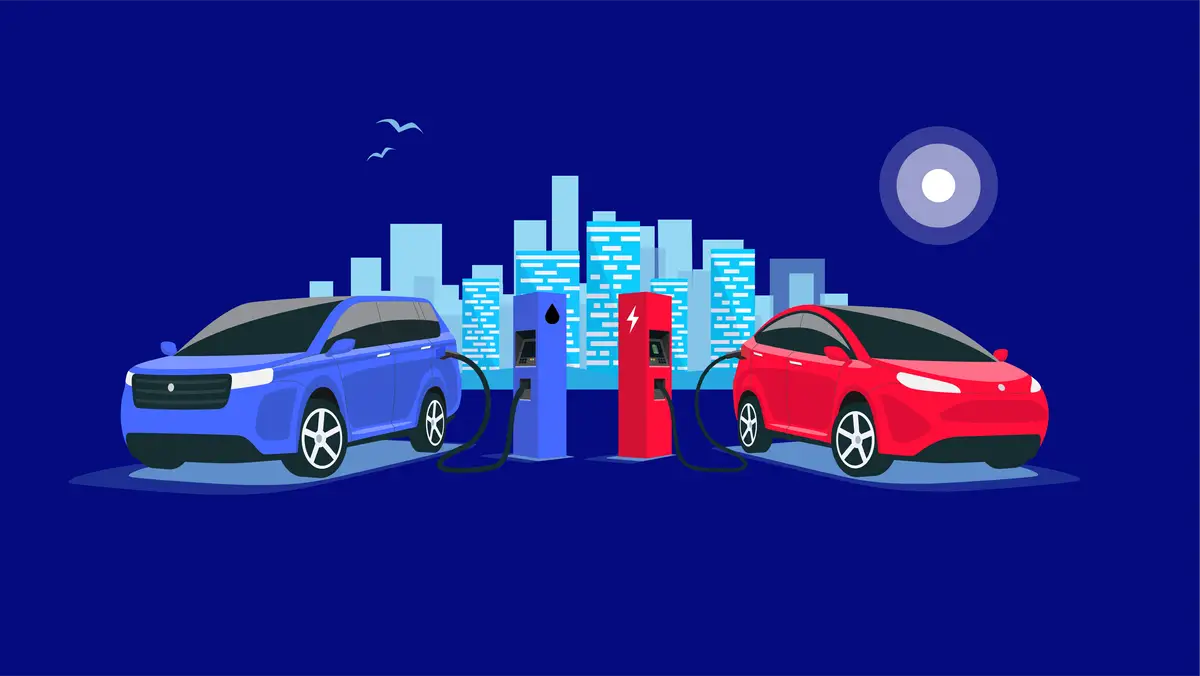Electric Vehicles vs. Internal Combustion Engine Vehicles: A Comparative Analysis of Emissions.
In recent years, the global automotive industry has witnessed a significant shift towards electric vehicles (EVs) as a cleaner and more sustainable alternative to traditional internal combustion engine (ICE) vehicles.


In recent years, the global automotive industry has witnessed a significant shift towards electric vehicles (EVs) as a cleaner and more sustainable alternative to traditional internal combustion engine (ICE) vehicles.
One of the key driving factors behind this transition is the urgent need to mitigate the adverse environmental impact of transportation-related emissions.
Read: Why you should consider EVs over combustion cars
In this article, we will delve into a comparative analysis of emissions between EVs and ICE vehicles, exploring the environmental implications of each technology.
1. Tailpipe Emissions:
Traditional ICE vehicles are notorious for their emissions of pollutants such as carbon dioxide (CO2), nitrogen oxides (NOx), particulate matter (PM), and volatile organic compounds (VOCs).
These emissions are released directly from the vehicle's tailpipe during the combustion of fossil fuels, contributing to air pollution and adverse health effects.
In contrast, EVs produce zero tailpipe emissions during operation.
Since they run on electricity stored in batteries, they do not burn fossil fuels and therefore do not emit any pollutants directly into the atmosphere.
Related: How To Convert A Combustion Car to Electric
This inherent advantage of EVs makes them a cleaner option for urban environments and regions struggling with air quality issues.
2. Well-to-Wheel Emissions:
While EVs do not emit pollutants during operation, it's essential to consider the emissions associated with electricity generation and battery manufacturing.
The concept of "well-to-wheel" emissions encompasses the entire lifecycle of a vehicle, from the extraction of raw materials to its eventual operation on the road.
In regions where electricity generation relies heavily on fossil fuels such as coal or natural gas, EVs may indirectly contribute to emissions through the power grid.
However, as the global energy mix shifts towards renewable sources such as solar, wind, and hydroelectric power, the carbon footprint of electricity generation continues to decrease, further enhancing the environmental credentials of EVs.
Similarly, the production of batteries for EVs involves energy-intensive processes and the extraction of raw materials such as lithium, cobalt, and nickel.
Also read: Why You Should Ditch Combustion Cars
While advancements in battery technology and sustainable sourcing practices aim to minimize the environmental impact of battery manufacturing, it remains a significant consideration in the overall lifecycle emissions of EVs.
3. Lifecycle Emissions:
When considering the full lifecycle emissions of vehicles, including manufacturing, operation, and disposal, studies have shown that EVs generally have lower emissions compared to ICE vehicles, especially in regions with cleaner electricity grids.
Research conducted by organizations such as the Union of Concerned Scientists and the International Council on Clean Transportation has consistently demonstrated the environmental benefits of EVs over their fossil fuel-powered counterparts.
Moreover, as technology advances and economies of scale drive down costs, the environmental performance of EVs is expected to improve further.
Read: Electric Vehicles, Climate change, and global health policy
From advancements in battery chemistry to the expansion of renewable energy infrastructure, ongoing efforts are underway to enhance the sustainability of electric transportation.
Conclusion:
In conclusion, the comparison of emissions between electric vehicles and internal combustion engine vehicles reveals a clear advantage for EVs in terms of environmental impact.
While ICE vehicles continue to dominate the global automotive market, the transition to electric mobility represents a crucial step towards reducing greenhouse gas emissions, improving air quality, and mitigating the adverse effects of climate change.
As governments, automakers, and consumers embrace the shift towards electrification, it is essential to consider the broader implications of transportation technology choices on the health of our planet and future generations.
By prioritizing the adoption of electric vehicles and supporting the transition to clean energy systems, we can pave the way toward a more sustainable and resilient transportation sector.




